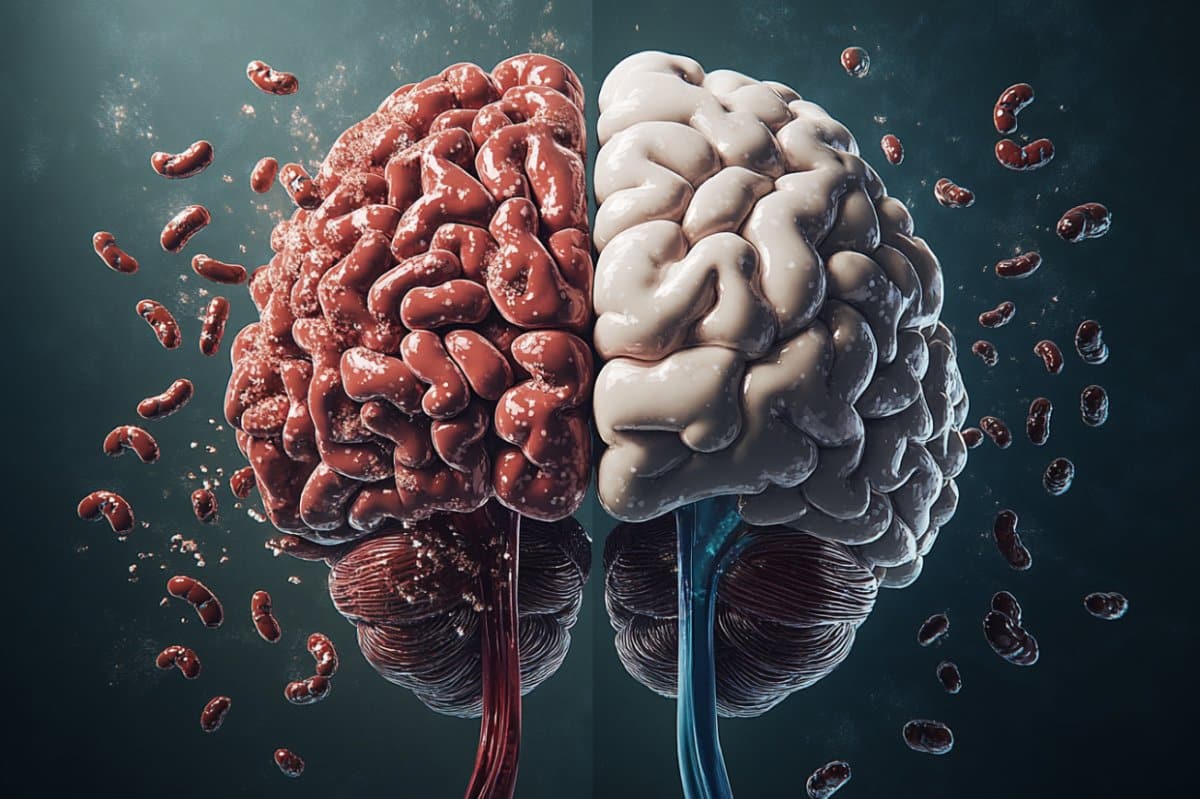Summary: New research reveals that hyperactivity in a specific set of brain cells, AgRP neurons in the hypothalamus, plays a key role in type 2 diabetes, independent of obesity. When these neurons were silenced in diabetic mice, blood sugar normalized for months, even without changes in weight or food intake.
This challenges long-standing beliefs that obesity and insulin resistance are the sole drivers of diabetes. The findings suggest that targeting brain circuits could become a powerful new approach to treating the disease.
Key Facts:
- Neural Control: Silencing hyperactive AgRP neurons reversed diabetes in mice without affecting weight.
- Independent of Obesity: Diabetes remission occurred despite unchanged food intake and body mass.
- Therapeutic Shift: Targeting brain cells may offer a new strategy for diabetes treatment beyond current drug approaches.
Source: University of Washington
Successfully treating type 2 diabetes may involve focusing on brain neurons, rather than simply concentrating on obesity or insulin resistance, according to a study published today in the Journal of Clinical Investigation.
For several years, researchers have known that hyperactivity of a subset of neurons located in the hypothalamus, called AgRP neurons, is common in mice with diabetes.

“These neurons are playing an outsized role in hyperglycemia and type 2 diabetes,” said UW Medicine endocrinologist Dr. Michael Schwartz, corresponding author of the paper.
To determine if these neurons contribute to elevated blood sugar in diabetic mice, researchers employed a widely used viral genetics approach to make AgRP neurons express tetanus toxin, which prevents the neurons from communicating with other neurons.
Unexpectedly, this intervention normalized high blood sugar for months, despite having no effect on body weight or food consumption.
Conventional wisdom is that diabetes, particularly type 2 diabetes, stems from a combination of genetic predisposition and lifestyle factors, including obesity, lack of physical activity and poor diet. This mix of factors leads to insulin resistance or insufficient insulin production.
Until now, scientists have traditionally thought the brain doesn’t play a role in type 2 diabetes, according to Schwartz.
he paper challenges this and is a “departure from the conventional wisdom of what causes diabetes,” he said.
The new findings align with studies published by the same scientists showing that injection of a peptide called FGF1 directly into the brain also causes diabetes remission in mice. This effect was subsequently shown to involve sustained inhibition of AgRP neurons.
Together, the data suggest that, while these neurons are important for controlling blood sugar in diabetes, they don’t play a major role in causing obesity in these mice, the researchers noted in their report.
In other words, targeting these neurons may not reverse obesity, even as it causes diabetes to go into remission, Schwartz explained.
More research is needed on how to regulate activity in these neurons, and how they become hyperactive in the first place, he said. Once these questions are answered, Schwartz said that a therapeutic approach might then be developed to calm them down.
This approach could represent a shift in how clinicians understand and treat this chronic disease, Schwartz said. He noted, for instance, that Ozempic and other new drugs used to treat type 2 diabetes are also able to inhibit AgRP neurons.
The extent to which this effect contributes to the antidiabetic action of these drugs is unknown. Further research might help scientists to better understand the role of AgRP neurons in how the body normally controls blood sugar, and to ultimately translate these findings into human clinical trials, he added.
Schwartz holds the UW Robert H. Williams Endowed Chair in Medicine and is a UW professor of medicine, Division of Metabolism, Endocrinology and Nutrition, and an adjunct professor of laboratory medicine and pathology. He is also the founding director of the UW Medicine Diabetes and Obesity Center of Excellence.
Funding: This work was supported by National Institutes of Health grants (DK083042, DK101997, DK089056, DK124238 S10OD036208, DK114474, DK128383, DoD W81XWH2110635 and P30 DK089507); the NIH-NIDDK funded Nutrition Obesity Research Center (P30DK035816); Diabetes Research Center (P30DK017047) and Diabetes, Obesity and Metabolism Training Grant (T32 DK007247; CLF) at the University of Washington; a Department of Defense grant (W81XWH2110635); and a research agreement between Schwartz and Novo Nordisk, and the Cystic Fibrosis Foundation (SINGH19R0 and SINGH24R0).
About this diabetes and neuroscience research news
Author: Barbara Clements
Source: University of Washington
Contact: Barbara Clements – University of Washington
Image: The image is credited to Neuroscience News
Original Research: Open access.
“AgRP neuron hyperactivity drives hyperglycemia in a mouse model of type 2 diabetes” by Michael Schwartz et al. JCI
Abstract
AgRP neuron hyperactivity drives hyperglycemia in a mouse model of type 2 diabetes
Growing evidence suggests that the pathogenesis of type 2 diabetes (T2D) involves dysfunctional central mechanisms, and, hence, the brain can be targeted to treat this disease.
As an example, a single intracerebroventricular (icv) injection of fibroblast growth factor 1 (FGF1) can normalize hyperglycemia for weeks or months in rodent models of T2D. Convergent evidence implicates inhibition of a particular subset of neurons as a mediator of this FGF1 effect.
Specifically, AgRP neurons, which are located in the hypothalamic arcuate nucleus (ARC) and are hyperactive in Lepob/ob mice and other rodent models of T2D.
To investigate whether chronic AgRP neuron inactivation mimics the antidiabetic action of FGF1, we directed an adeno-associated virus (AAV) containing a cre-inducible tetanus toxin–GFP (TeTx-GFP) cassette (or cre-inducible AAV GFP control) to the ARC of obese, diabetic male Lepob/ob mice in which cre recombinase is expressed solely by AgRP neurons (Lepob/ob AgRP-Cre mice).
We report that over a 10-wk period of observation, hyperglycemia was fully normalized by AgRP neuron inactivation. In contrast, changes in energy homeostasis parameters (food intake, energy expenditure, body weight, and fat mass) were not observed.
We conclude that in diabetic male Lepob/ob mice, AgRP neuron hyperactivity is required for hyperglycemia but is dispensable for obesity.






